#Sebastian Bach icons
Explore tagged Tumblr posts
Text


ROCK POWER's "Hottest in Rock" lists for October, 1992 as voted by readers.
edit: want to participate in a redo of this poll? fill in this form :)
#mine#it would be so much fun to recreate this in the 2024th year of our Lord#sebastian bach making 2nd place for hottest women in rock AND ALSO hottest men in rock is iconic#i can't believe bret only placed 7th#rock power#rock power magazine#heavy metal#thrash metal#glam metal#80s metal#90s metal#80s glam#90s glam#save#poll
39 notes
·
View notes
Text
Marina Klimova and Sergei Ponomarenko Exhibition, 1992.
Air from Suite No. 3 by Johann Sebastian Bach.
#the original costume with the bodysuit is iconic but I love to see this routine done in a pretty dress :)#also redheads always look great in orange mkay#ice dance#marina klimova#sergei ponomarenko#figure skating#bach#johann sebastian bach#1992#1990s
107 notes
·
View notes
Text
my favourite and oldest hobby is writing essays or small stories at 1 am on a school night and blasting classical music
#analysis#english literature#donna tartt#the secret history#tumblr girls#it girl#70s icons#readblr#for real#girlblogging#reading#writing#academic essay#essay#short story#classic film#classical music#old music#sebastian bach
60 notes
·
View notes
Text
Axl Rose during 1990 RIP! Magazines Party in Los Angeles, California. 📸: Jeff Kravitz



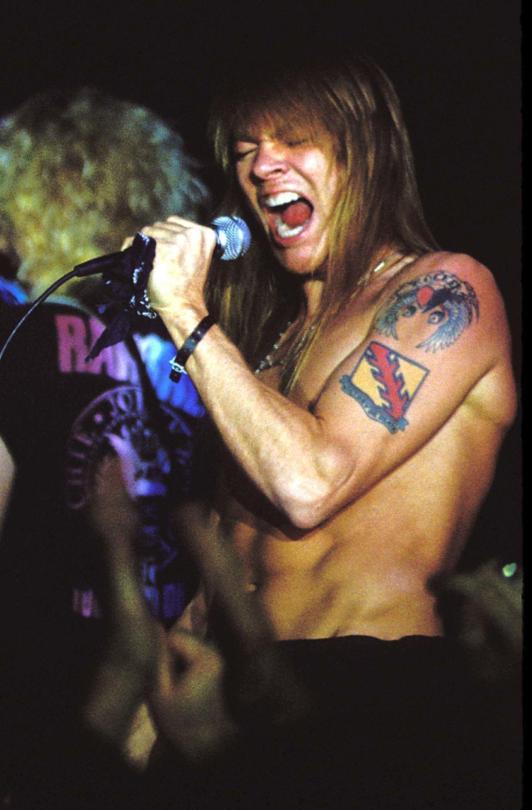

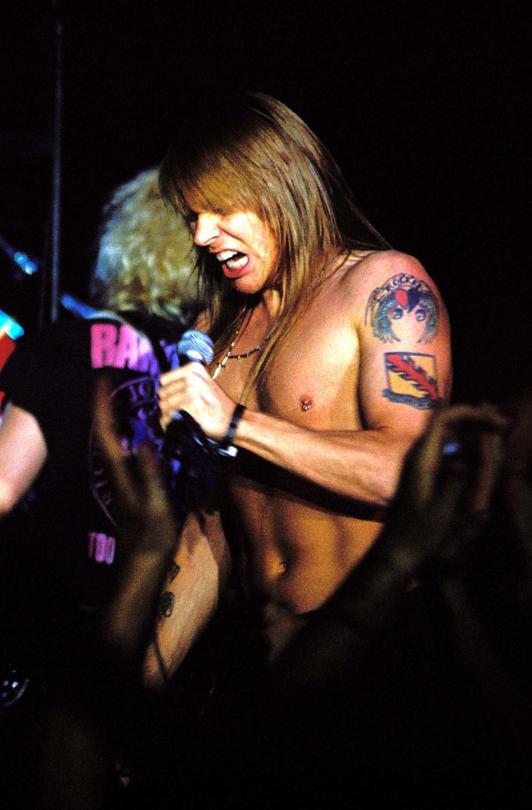


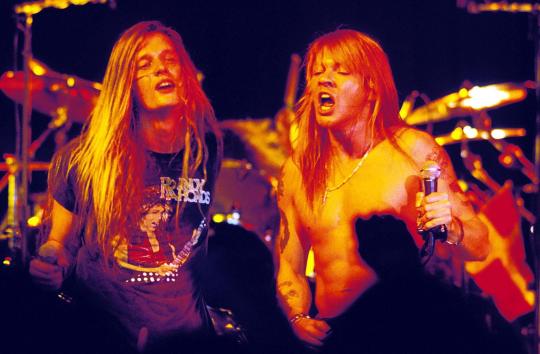
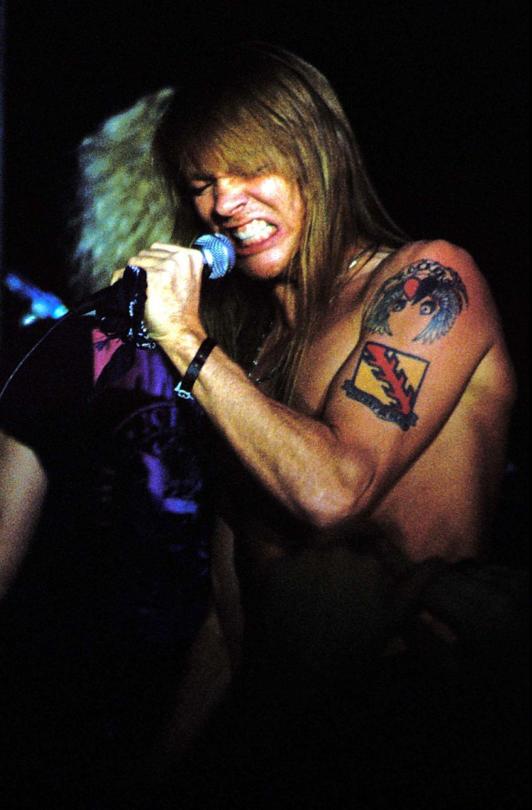
#axl rose#guns n roses#gnr#w axl rose#80s rockstar#90s rockstar#80s icons#appetite for destruction#young axl rose#hair metal#sebastian bach#james hetfield
129 notes
·
View notes
Video
youtube
2024 June 30
Earthrise: A Video Reconstruction Video Credit: NASA, SVS, Apollo 8 Crew; Lead Animator: Ernie Wright; (USRA); Music: C Major Prelude by Johann Sebastian Bach
Explanation: About 12 seconds into this video, something unusual happens. The Earth begins to rise. Never seen by humans before, the rise of the Earth over the limb of the Moon occurred about 55.5 years ago and surprised and amazed the crew of Apollo 8. The crew immediately scrambled to take still images of the stunning vista caused by Apollo 8's orbit around the Moon. The featured video is a modern reconstruction of the event as it would have looked were it recorded with a modern movie camera. The colorful orb of our Earth stood out as a familiar icon rising above a distant and unfamiliar moonscape, the whole scene the conceptual reverse of a more familiar moonrise as seen from Earth. To many, the scene also spoke about the unity of humanity: that big blue marble -- that's us -- we all live there. The two-minute video is not time-lapse -- this is the real speed of the Earth rising through the windows of Apollo 8. Seven months and three missions later, Apollo 11 astronauts would not only circle Earth's moon, but land on it.
∞ Source: apod.nasa.gov/apod/ap240630.html
57 notes
·
View notes
Text
Trumpet Facts
The trumpet dates back to at least 1500 BC. It was used in ancient civilizations such as Egypt for religious and military purposes. The earliest trumpets were made from animal horns or conch shells before metalworking techniques allowed for the creation of bronze and silver trumpets.
The trumpet became a staple in orchestral compositions during the Baroque period, with composers like Johann Sebastian Bach and George Frideric Handel writing significant works that featured the trumpet. The instrument's design evolved during this time to allow for better tone and range.
The modern trumpet design, which includes valves, was developed in the early 19th century. The addition of valves allowed players to produce a full chromatic scale, greatly expanding the musical possibilities of the trumpet. This invention is attributed to Heinrich Stölzel and Friedrich Blühmel around 1818.
The trumpet is one of the most iconic instruments in jazz music. Legendary musicians like Louis Armstrong, Miles Davis, and Dizzy Gillespie used the trumpet to create some of the genre's most memorable performances and recordings, influencing the development of jazz throughout the 20th century.
There are several types of trumpets based on their pitch and design, including the B-flat trumpet, which is the most common in modern times, the C trumpet, commonly used in orchestral settings, the smaller E-flat and piccolo trumpets, and the larger bass trumpets. Each type serves a specific musical purpose and offers a different range of notes.
10 notes
·
View notes
Text
Also, what you have described with putting music in the saxophone – the great work of John Cage. I’ve noticed that no one talks about John Cage anymore. But in fact, the great work of John Cage, the great work of Alvin Lucier, the great work of Pauline Oliveros, part of our responsibilities, in my opinion, is to help the younger people learn about who’s doing what, and what in particular has come from what. As far as I’m concerned the great work of Johann Sebastian Bach is still relevant, and still revolutionary. When I go back, I’m trying to study the early Egyptian musics. Great masters like Oum Kalthoum. We should never forget, or at least I should never forget, that music is as much a mystical discipline as a sonic discipline, or iconic discipline. And so this is why I feel like everything is possible as we continue to move forward.
Anthony Braxton, interview from The Quietus
12 notes
·
View notes
Text




Rob Halford reflects on what it was like being gay in the metal scene during the 80s;
"When you think about the glam rock movement, what it was, specifically, two bands that really pushed that for me were MÖTLEY CRÜE and POISON — and, to some effect, CINDERELLA, maybe some WINGER, L.A. GUNS," he said.
"There was a lot of stuff coming through at that moment in the glam rock era. And definitely Sebastian [Bach, then-SKID ROW singer], you know, when guys looked like girls. And that worked. And I could never quite figure that out, because of the homophobic stuff that was going on in the '80s. And there's all these guys with makeup on, looking ... I have to watch my words here, but you know what I'm saying? Looking in a specific way, that everybody else is like, 'Yeah, man, they're really hardcore,' and all that kind of stuff. And then me as a closeted gay man, it's like, 'Am I missing something here? How am I not able to come out for fear of losing my career and my band, but these guys are going out there looking like they do, and everybody's falling over them?'
"We always knew Rob was gay," K.K. said. "Because the thing is back in the days — in the '60s and particularly early '70s, when everything was still kind of behind closed doors and stuff like that — people felt a bit more comfortable around us because we would hang around in groups and gangs and we would always know that that guy is different to us and that girl is different."
Rob also wrote about how PRIEST came to adopt its iconic leather look, saying: "The biggest myth about this new stage gear is that I had somehow masterminded the image as a cover and a vent for my homosexuality — that I was getting a thrill from dressing on stage as I'd like to dress in the street, or the bedroom. This is utter bollocks. I had no interest in S&M, domination or the whole queer subcult of leather and chains. It just didn't do it for me. My sexual preference was for men, sure, but I was — and still am — pretty vanilla. I've never used a whip in the boudoir in my life. Or, have I? Hang on, let me think for a minute…"
INTERVIEW TAKEN FROM THIS ARTICLE
13 notes
·
View notes
Text
Zodiac Signs, Cities & Curious Facts! 🌆
Each city was selected by me from "The Rulership Book" by Rex E. Bills, alongside one fact that matches that particular sign's energy! There are more cities and places that align with the vibration of each sign, but these are the ones I picked for this post. All pictures are from Google Images.
Enjoy this random and (hopefully) fun thread!😁
♈Aries: FLORENCE, Italy
Florence has a unique street festival: The "Calcio Storico" is a traditional street football game played annually there. The game involves four teams representing the four historic quarters of the city, and it's known for its rough and intense style of play!

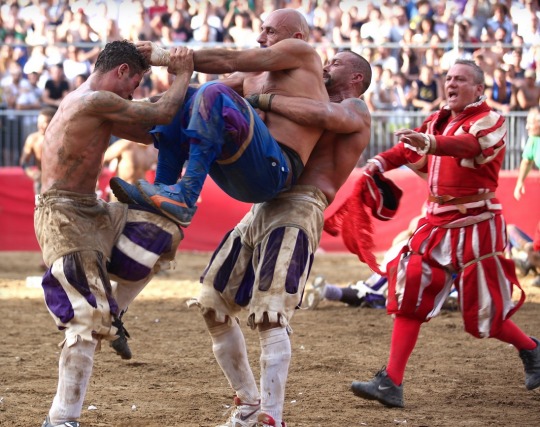
♉Taurus: LEIPZIG, Germany
Leipzig is known as the "City of Music": Leipzig has a rich musical heritage and is considered one of the world's most important cities for classical music. Famous composers such as Johann Sebastian Bach, Richard Wagner, and Felix Mendelssohn Bartholdy have strong connections to Leipzig, and their music is celebrated in the city's numerous concert halls, museums, and festivals.
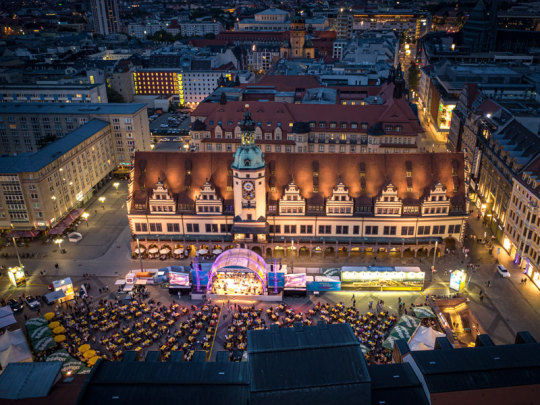
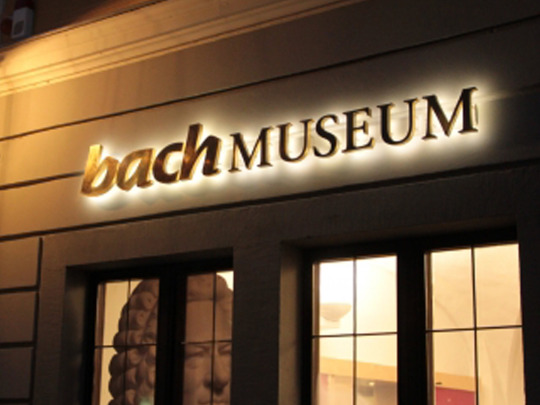
♊Gemini: LONDON, England
London has a "whispering gallery": The Whispering Gallery in St. Paul's Cathedral is a circular gallery that runs around the interior of the dome. Due to its unique acoustics, if you whisper against the wall on one side of the gallery, the sound can be heard on the other side, over 100 feet away.
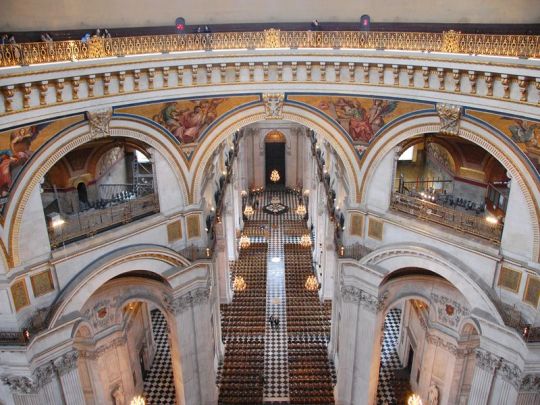
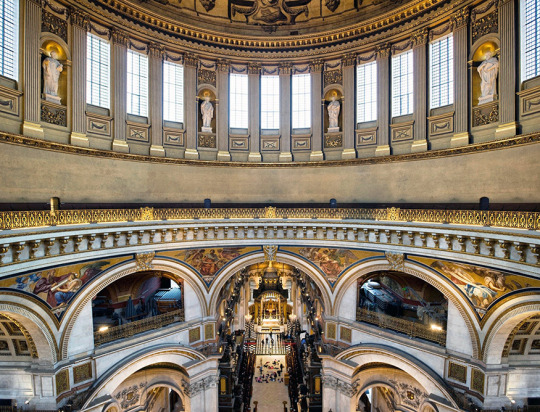
♋Cancer: ISTANBUL, Turkey
Istanbul has a famous street for cats: The "Cat Street" or "Kedi Sokak" in Turkish is a narrow street in the historic district of Sultanahmet that is home to dozens of stray cats. The cats are well-fed and cared for by locals, and the street has become a popular tourist attraction.


♌Leo: BERLIN, Germany
Berlin is a graffiti artist's paradise: The city has a long history of street art and is home to some of the most famous graffiti murals in the world. The East Side Gallery, a section of the Berlin Wall that has been turned into an open-air gallery, features over 100 paintings by artists from around the world.
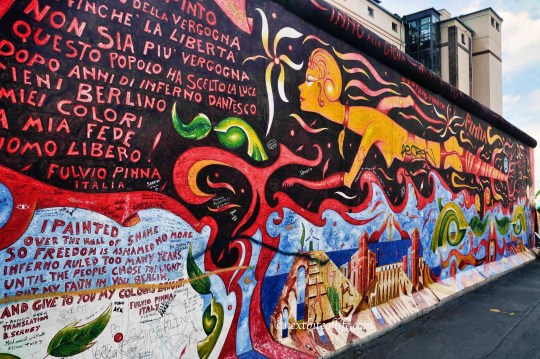
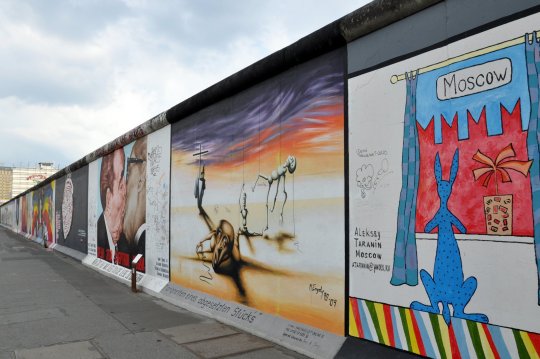
♍Virgo: MOSCOW, Russia
Moscow has a rich literary history: Many famous Russian writers, including Leo Tolstoy, Fyodor Dostoevsky, and Anton Chekhov, lived and worked in Moscow. It also has the largest number of public libraries in the world: "The Russian State Library" , which is the largest library in Europe and the second largest library in the world, after the Library of Congress in the United States.


♎Libra: VIENNA, Austria
Vienna has a rich musical history: Vienna has been a center of musical innovation and creativity for centuries and has been home to many famous composers such as Mozart, Beethoven, and Strauss. Today, the city is renowned for its classical music scene and is home to the world-famous Vienna Philharmonic Orchestra.
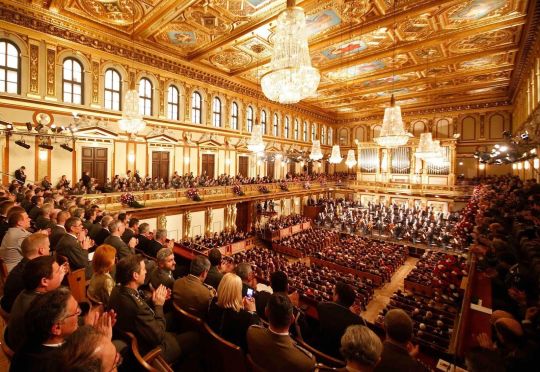
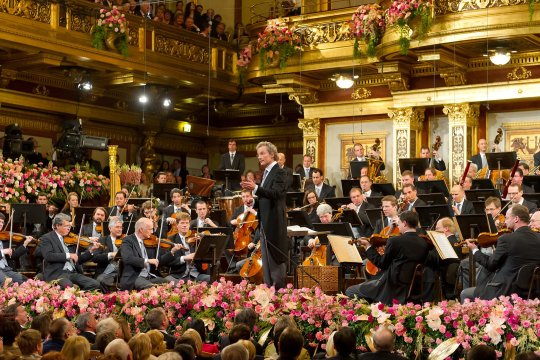
♏Scorpio: TOKYO, Japan
Tokyo has a unique fashion scene: Tokyo's fashion scene is known for its avant-garde and eclectic styles, with Harajuku being the center of youth fashion culture. "Gothic Lolita" is part of Harajuku, and it incorporates darker and more macabre elements into the Lolita fashion aesthetic.


♐Sagittarius: TUSCANY, Italy
Tuscany is home to the oldest university in Europe: The University of Bologna, which is located in Tuscany, is the oldest university in Europe, having been founded in 1088. It is still one of the most prestigious universities in Italy.
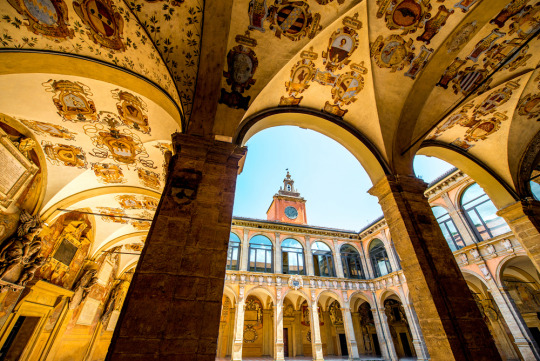
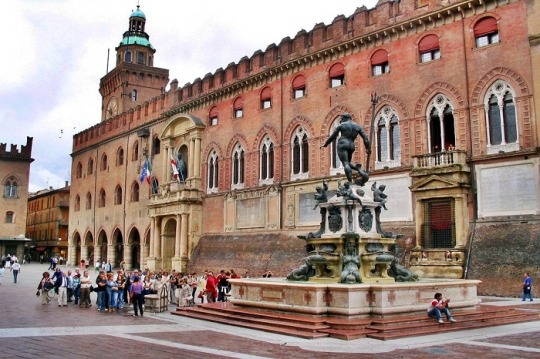
♑Capricorn: BRUSSELS, Belgium
Brussels is home to the "Atomium": The Atomium is a unique architectural structure in Brussels that was built for the 1958 World Exposition. It is designed to represent an iron crystal magnified 165 billion times, and it has become an iconic symbol of the city.
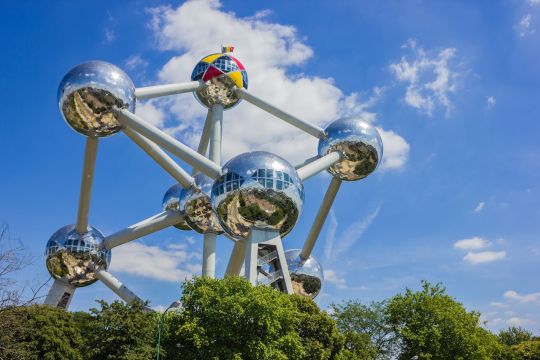
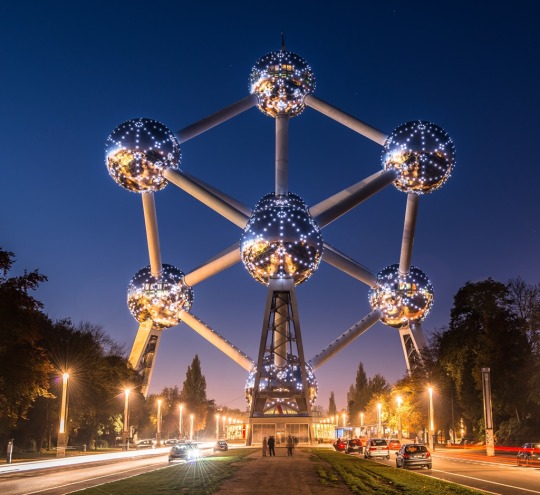
♒Aquarius: LOS ANGELES, California
LA is the birthplace of the Internet: The first successful transmission of a message over the Internet occurred on October 29, 1969, between two computers located at the University of California, Los Angeles (UCLA) and the Stanford Research Institute. This event is considered the birth of the Internet.


♓Pisces: GALICIA, Spain
Galicia is home to an ancient spiritual destination: The Way of St. James, also known as the Camino de Santiago, is a famous pilgrimage route that leads to the cathedral of Santiago de Compostela in Galicia. Every year, thousands of people from all over the world make the 780 km journey on foot, bicycle, or horseback. Many of them walk the route for spiritual reasons, while others enjoy the physical challenge and the opportunity to meet people from all over the world.
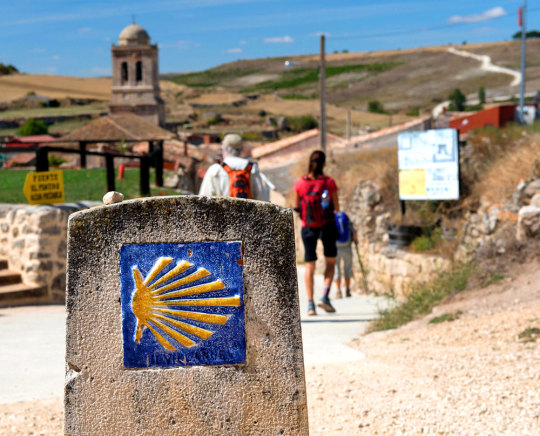

Now, that was a pleasure to put together! How do you feel about the fact/city for your sign? As a Virgo, I'd love to visit the Moscow library, but as a weird/edgy fashion sucker, Tokyo seems like a whole lot of fun! Also, the Aries one made me LOL! Y'all just can't stop fighting, can you? 😂
Which fact/city is your favorite one(s)? Let me know down below! 🖤
- Foxbörn
ᴍᴀꜱᴛᴇʀʟɪꜱᴛ 1
ᴄʜᴀʀᴛ ʀᴇᴀᴅɪɴɢꜱ
ᴡᴀɴᴛ ᴛᴏ ʙᴜʏ ᴍᴇ ᴀ ᴄᴏꜰꜰᴇᴇ?
#astro notes#astrology#astro observations#astrology notes#birth chart#zodiac#astro community#zodiac signs#horoscope#aries#taurus#gemini#cancer#leo#virgo#libra zodiac sign#scorpio#sagittarius#capricorn#aquarius#pisces#travel
135 notes
·
View notes
Text
OFMD Soundtrack Concert
I spent a huge part of my last week looking at the OFMD soundtrack in detail and love the music used in both seasons (OST, post 1920s-songs (Miles From Nowhere is my absolute favourite) and "classical" pieces (mainly for orchestra and/or piano)). It's been a bit of an obsession actually, and I can't stop imagining a big concert of all of my favourite "classical" (and baroque etc, I know) pieces... if only I had an orchestra and venue at my disposal... the 22 tracks (20 really) add up to about 100 minutes. The list of things I'd have them play under the cut:
A Pirate's Life (Mark Mothersbaugh) Yeah, alright, I won't have Joel Fry there to sing it and it isn't a classical piece. But I would want the concert to start like the show, with this. A bit of a gimmick, someone with a guitar just doing this small bit to get everyone in a pirate mood. The last thing all the way down will also be from the OST, more on that when I get to it.
2. Concerto for Recorder and Viola da Gamba in A Minor, TWV 52:A1: I. Grave (Georg Philip Telemann) This is the one piece that always gets me nostalgic for season 1. This is early Stede and his early crew, I always have his voice in my head while listening to this. One of THE OFMD pieces for me, also because it's reused in episodes 1x07 and 2x05.
youtube
3. Symphony No. 34 in C, K.338 - 2. Andante di molto (Wolfgang Amadeus Mozart) This one is used once in 1x02 and twice in 1x03 - I was debating if I should include it since it's so long and only a small part of it is actually heard in the show. I've added it because I really like it and do find it iconic in those scenes - Stede finding his brand! (and because I feel it fits with the flow of the concert)
youtube
4. Sonata No. 2 in A major Op. 2 No. 2, - III. Scherzo - Allegretto (Ludwig van Beethoven) On to episode 1x04 where we get to hear quite a bit of this one over Stede and Mary having to get married. Another very nice piece that always transports me straight into that episode. Overall the soundtrack mixes orchestra- and piano-pieces quite colourfully, which would be reflected in my concert too (would need a very able pianist for it!).
youtube
5. Sonata in E Major, Kk. 380 (Domenico Scarlatti) They've gotten rid of the Spanish! I love the whole lighthouse sequence a lot (Wee John makes me laugh every last time) and the crew's joy is transported very well in this piece. Another one where the quotient "bit played on the show/length of the piece" is not that big, but another one that I just really like and find fitting to include.
youtube
6. Concerto in A Major, BWV 1055: III. Allegro ma non tanto (Johann Sebastian Bach) Welcome on the fancy ship of not so fancy people... episode 1x05 is one of my very favourites and that whole environment of the french ship is very well represented in this piece I think. There are loads more pieces in the episode that I haven't been able to identify, but I think this one here is the most striking anyway.
youtube
7. Gnossienne No. 5 (Erik Satie) Yes, I'm putting this here. There are more than half a dozen other points in the show where this lovely tune is heard, but I want to place it at the 'you wear fine things well' part. To calm down after the fast paced party from before. To make everyone think of that moon that's way too big. And this is the spot where the piano-version of this is heard for the first time anyway.
youtube
8. Concerto for 2 Cellos in G Minor, RV 531: I. Allegro (Antonio Vivaldi) Bit of a jump from 1x05 to 1x09, but the episodes inbetween had little material for a concert like this (where there'd be no one to sing Mozart's "Voi, che sapete", that's also why Verdi's "Dies Irae" isn't there either). I love the crew and their various excuses - and find this to be a fun piece that needs to be there. One thing that I've read several times that irks me: I'm still searching for the piece that's playing in 1x03 where Stede almost dies and Blackbeard attacks the Spanish. People say it's this one here, but I've listened to it so often and am SO sure that that's not it. Don't know what is, though.
youtube
9. Arabesque, No. 1 in E Major (Claude Debussy) Mary living her best life! I love that we got to see that and love her and her fellow widows a lot. I'm not quite happy with having two Debussy's back to back, but like this piece and like thinking of Mary too much to leave it out.
youtube
10. Rêverie, L. 68 - Rêverie (Claude Debussy) I'm a sucker for 'oh shit, I love them!'-flashback-montages and the one set to this piece is a beauty! Another bit that I've watched so often that I see it all in my mind while listening to this. The part where the show jumps to Ed and his flashback to 'you wear fine things well' (like 2:04) always kills me.
youtube
11. The Four Seasons - Summer in G Minor, RV. 315: I. Allegro non molto – Allegro (Antonio Vivaldi) We say goodbye to season 1 with another Vivaldi, one that took ages for me to recognize in the show. I knew it was supposed to be there while Stede starts his Fuckery and Kraken!Ed abandons the crew, but for a very long time was sure that that wasn't really it (and a bit of doubt remains). Well, the slow parts are definitely in the show, just to my ear the fast parts sound different. Anyway, it also shows up in 2x06 and needs to be in my concert.
youtube
After this we'd have the intermission - and part two will be in a reblog because I've run out of links in this post.
9 notes
·
View notes
Text
An all-new "Biography" episode devoted to Sammy Hagar will make its debut June 30th on A&E.
FROM A&E:
A&E offers viewers a backstage pass to the celebrated careers of some of hard rock's greatest legends with new specials celebrating rock icons Bret Michaels, Twisted Sister's Dee Snider, Alice Cooper, Sammy Hagar, and Sebastian Bach. Produced by Banger Films in association with A+E Factual Studios group under the award-winning Biography banner, the specials will feature exclusive interviews with each and those closest to them. Beginning Sunday, June 16th at 9 pm ET, the nostalgia-inducing specials will go behind-the-scenes to the artists' journeys to fame, legendary careers, and iconic music that defined the genre then and now.
Premiering Sunday, June 30th at 9 pm ET, Biography: Sammy Hagar traces Hagar's path to fame, beginning as a poverty- stricken child, to the lead singer of the band Montrose, to launching a successful solo career, and ultimately joining Van Halen. The special explores how Hagar helped Van Halen get their first-ever No. 1 hit, uncovers what led a band that was on the top of the world to suddenly split apart, and how Hagar has continued to leave his mark on the hard rock genre.
All specials will be available on demand and to stream on the A&E App and aetv.com.
youtube
#van Halen news desk#biography#a&e#sammy hagar#2024#tv shows#Biography: Sammy Hagar#trailers#YouTube#news#bret michaels#poison#twisted sister#dee snider#alice cooper#sebastian bach#skid row
3 notes
·
View notes
Text
A&E ROCKS WITH SOME OF HARD ROCK’SGREATEST LEGENDS IN NEW "BIOGRAPHY®" SPECIALS FEATURING BRET MICHAELS, DEE SNIDER, ALICE COOPER,SAMMY HAGAR, AND SEBASTIAN BACH
BEGINNING SUNDAY, JUNE 16 AT 9PM ET EACH SPECIAL OFFERS A BACKSTAGE PASS INTO THE ICONS’ LIVES AND THEIR CELEBRATED MUSIC LIKE NEVER BEFORE New York, NY – May 7, 2024 – A&E offers viewers a backstage pass to the celebrated careers of some of hard rock’s greatest legends with new specials celebrating rock icons Bret Michaels, Twisted Sister’s Dee Snider, Alice Cooper, Sammy Hagar, and Sebastian…
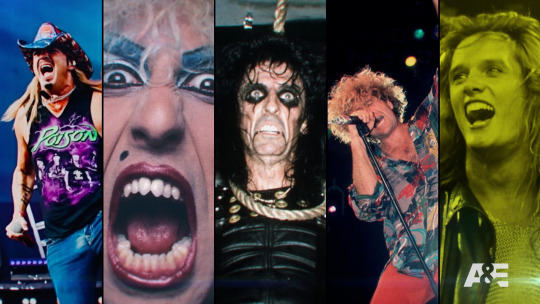
View On WordPress
1 note
·
View note
Text
Knocking on Heaven's Door
“If Bach is not in Heaven, I am not going,” William F. Buckley, the iconic conservative writer, political commentator, and host of the talk show Firing Line once said. Is there a more quintessentially Buckleian paradox than this? William Frank Buckley, a devout Catholic, beatifying Johann Sebastian Bach, a dyed-in-the-wool Lutheran? “It may be that when the angels go about their task praising…

View On WordPress
0 notes
Text
Harmonic Chronicles: A Comprehensive Exploration of Music's Evolution
Music, the universal language of emotion and expression, has evolved over centuries, mirroring the ever-changing tapestry of human existence. From the ancient chants of early civilizations to the modern beats of contemporary genres, the journey of music genres reflects the diverse cultures, technological advancements, and social movements that have shaped our world. Join us on a comprehensive exploration of this musical evolution, tracing the threads of melody and rhythm through time.
Ancient Echoes:
Our journey commences in the ancient world, where music served as a vital component of communal rituals and spiritual practices. In civilizations like Mesopotamia, Egypt, and ancient China, music was deeply intertwined with religious ceremonies, agricultural rituals, and storytelling traditions. From the haunting melodies of flutes to the rhythmic pulse of drums, ancient music echoed the heartbeat of humanity, connecting individuals to the cosmos.
Medieval Melodies:
As we progress into the medieval period, music takes on new forms and functions within society. In Europe, the rise of feudalism and the spread of Christianity gave rise to new musical genres, such as Gregorian chants and troubadour songs. Monasteries became centers of musical innovation, preserving and transmitting sacred melodies through oral tradition and early forms of notation. Meanwhile, secular music flourished in the courts of nobility, where minstrels and jongleurs entertained audiences with tales of courtly love and chivalry.
Renaissance Revelations:
The Renaissance witnessed a flourishing of artistic creativity and cultural exchange, leading to significant advancements in music theory and composition. Innovations such as polyphony, harmony, and the use of musical instruments transformed the musical landscape, paving the way for the emergence of new genres like madrigals, motets, and instrumental consort music. Renaissance composers such as Josquin des Prez and Giovanni Pierluigi da Palestrina pushed the boundaries of musical expression, exploring themes of love, devotion, and humanism in their compositions.
Baroque Brilliance:
The Baroque era, with its emphasis on drama, ornamentation, and emotional intensity, produced some of the most iconic works in the classical music repertoire. Baroque composers like Johann Sebastian Bach, George Frideric Handel, and Antonio Vivaldi crafted masterpieces that showcased the expressive potential of instrumental music and the grandeur of vocal forms such as opera and oratorio. Baroque music was characterized by its intricate counterpoint, elaborate ornamentation, and use of contrasting textures and timbres to evoke a wide range of emotions.
Classical Conventions:
The Classical period, epitomized by composers such as Wolfgang Amadeus Mozart, Joseph Haydn, and Ludwig van Beethoven, it marked a shift towards clarity, balance, and formal elegance in music. Classical composers embraced new forms and structures, such as the symphony, sonata, and concerto, while also refining existing genres like opera and chamber music. The classical style was characterized by its adherence to formal conventions, balanced proportions, and emphasis on clarity of expression, making it a perfect vehicle for the Enlightenment ideals of reason, order, and humanism.
Romantic Revolution:
In the 19th century, the Romantic movement swept across Europe, ushering in a new era of emotional intensity, individual expression, and artistic freedom. Romantic composers like Beethoven, Franz Schubert, and Pyotr Ilyich Tchaikovsky rejected the formal constraints of the classical style in favor of more personal and expressive modes of composition. The romantic aesthetic was characterized by its emphasis on emotion, imagination, and the sublime, as well as its use of programmatic elements and expanded forms to convey narrative and dramatic content.
Jazz Journeys:
In the 20th century, they witnessed the emergence of jazz as a revolutionary new form of music that blended elements of African-American folk traditions with European harmonic concepts and improvisational techniques. Originating in the cultural melting pot of New Orleans, jazz quickly spread across the United States and around the world, becoming a symbol of urban modernity and social change. Jazz musicians like Louis Armstrong, Duke Ellington, and Charlie Parker pushed the boundaries of musical expression, pioneering new styles such as swing, bebop, and cool jazz that continue to influence musicians to this day.
Rock & Roll Revolution:
In the 1950s, rock and roll burst onto the scene, shaking up the music industry and capturing the imagination of a generation. With its infectious rhythms, catchy melodies, and rebellious attitude, rock and roll became a cultural phenomenon, challenging social norms and giving voice to the aspirations and frustrations of young people everywhere. Artists like Elvis Presley, Chuck Berry, and Little Richard paved the way for the rock revolution, which would go on to spawn countless subgenres and influence virtually every form of popular music that followed.
Pop Pioneers:
The rise of pop music in the second half of the 20th century brought with it a new era of mass entertainment and global cultural exchange. With the advent of television, radio, and the internet, pop stars like Michael Jackson, Madonna, and The Beatles achieved unprecedented levels of fame and influence, shaping the tastes and trends of millions of listeners around the world. Pop music became synonymous with youth culture, consumerism, and the relentless pursuit of novelty as artists and producers embraced new technologies and marketing strategies to reach ever-wider audiences.
Hip Hop Horizons:
In the urban neighborhoods of New York City, a new musical revolution was brewing. Hip-hop, born out of the creative energy and social activism of marginalized communities, emerged as a powerful force for self-expression and social change. From its humble beginnings at block parties and street corners, hip-hop quickly spread across the country and around the world, giving voice to the experiences and struggles of urban youth in America. Artists like Grandmaster Flash, Run-D.M.C., and Tupac Shakur used hip-hop as a platform to address issues of race, class, and identity while also pushing the boundaries of musical innovation with their inventive rhymes, rhythms, and production techniques.
Electronic Explorations:
As we enter the digital age, electronic music has emerged as a dominant force in the global music landscape, pushing the boundaries of sound and technology to create new sonic worlds. From the pioneering experiments of early electronic composers like Karlheinz Stockhausen and Pierre Schaeffer to the groundbreaking innovations of contemporary artists like Aphex Twin, Daft Punk, and Björk, electronic music continues to evolve and expand, blurring the lines between genres and challenging our preconceptions of what music can be. With its emphasis on experimentation, improvisation, and the manipulation of sound through electronic means, electronic music offers endless possibilities for creative expression and exploration in the 21st century and beyond.
As we reflect on the expansive journey of music's evolution, from the ancient rhythms of antiquity to the cutting-edge sounds of the digital age, we are reminded of the power of music to transcend boundaries, unite cultures, and inspire change. Across centuries and continents, music has served as a mirror of the human experience, reflecting our deepest emotions, aspirations, and dreams. As we look to the future, we can only imagine the new sounds and styles that await us as music continues to evolve and adapt to the ever-changing world around us.
0 notes
Text
Erik Grönwall verlässt Skid Row

Es hat sich, bis ich diese Zeilen hier verfasst habe, fast schon wie ein Lauffeuer in der Szene ausgebreitet. Erik Grönwall verlässt Skid Row. Ist für mich als grosser Fan von Skid Row, sie gehören für mich zu den wichtigsten Bands in meiner musikalischen Laufbahn, als auch grosser Verehrer von Erik, ein kleiner Schock, der erst einmal verdaut werden muss. Die Gründe für seinen Ausstieg absolut nachvollziehbar und auch ehrlich kommuniziert wie ich finde, hier sein Original Statement Yes, I have decided to leave Skid Row.
⠀⠀ The main reason being that it’s proved difficult to prioritize my health and full recovery as the lead singer of the band. ⠀⠀ ⠀⠀ In 2021 I was undergoing treatment against leukemia and that gave me a superpower called perspective. I decided to use that perspective and write down the values I wanted to live by for the rest of my life. On top of that list it says “health first”.⠀⠀ ⠀⠀ I’ve had to look at that list a lot of times this last year, questioning if I’m really living according to my values. At the end of the day I realized the answer was no. ⠀⠀ ⠀⠀ As a result of the treatments and transplant my immune system was impaired. You can think of my immune system as a 4 year old kid bringing home all kinds of viruses from preschool. It takes awhile to build up that resistance again but my immune system is getting stronger every day. However I’m still doing regular check ups (blood tests) at the hematology department in Sweden, which has proved challenging while keeping up with the Skid Row schedule. I have way too much respect for my medical history to push myself to the limit.⠀ ⠀⠀ I love Skid Row, I have nothing but respect for the guys in the band but I love and respect my health more. I understand that Skid Row is a touring band but like I told the guys: “if I can’t prioritize my health, then I’m not the right guy for the job”.⠀⠀ ⠀⠀ Please note, I’m NOT sick and it’s not that I don’t want to tour. I love being on the road. And of course we have tried to find the right balance together but at the end of the day I realized that it was better for me to step aside. ⠀ So now I’m going to focus on my full recovery, and come back stronger than ever. Meanwhile I’m finalizing my biography. And I’m going to start writing my own music again. ⠀⠀ ⠀⠀ Lastly, once again thank you to everyone who accepted me as the singer of this iconic band. ⠀⠀ ⠀⠀ Always remember that no job, no money, no fame is worth your health or well being. Health first always. I owe this decision to the guy in the second picture and I’m proud to be able to say that I kept my promise to him. Health first! Ich staune schon über dieses lange Statement, für mich ein Zeichen, dass es ihm überhaupt nicht leicht gefallen ist, diesen Schritt zu gehen. Was mich aber echt ankotzt ist die Tatsache, dass sofort die Seppel Fraktion um die Ecke kommt und auf diesen unsäglichen Bach plädiert. Bach war damals sicherlich der richtige Mann am Mikro, es gab aber Gründe weshalb er von der Band gefeuert wurde. Erik war das Beste was Skid Row in den letzten zwei Jahren passieren konnte. Ich kann mir auch vorstellen wie Sebastian in den nächsten Tagen seine Klappe nicht halten kann und wieder einmal seine "nur ich bin der Skid Row Sänger mit dem Geld verdient werden kann" Einstellung raushängen wird. Erik hat meinen allergrössten Respekt verdient, dass er diesen Schritt getan hat, zu sich selbst ehrlich ist und sein Versprechen sich gegenüber hält. Skid Row haben mit Lzzy Hale ihre temporäre Lösung gefunden für die anstehenden Shows, was danach kommt werden wir sehen und hören. Erik macht ja eh immer Musik und veröffentlicht mit seinen Buddies immer wieder Coverversionen (der kann einfach alles singen), nimmt sich jetzt Zeit für seine eigenen Sachen und die Autobiografie muss ich auch lesen, wenn sie dann mal veröffentlicht wird. Lesen Sie den ganzen Artikel
0 notes
Text
Module 8: Your Musical Theme
Theme: Journey Through Time
As an avid music listener, I find myself always getting drawn to the notion of time, its passage, and the multitude of experiences it encapsulates. So for this themed playlist that I am creating, I have made a selection of songs that traverse different eras, evoking a sense of temporal journey through their melodies, lyrics, and sonic landscapes. Each piece represents a distinct period or moment in time, showcasing the evolution of music across genres while maintaining a cohesive thematic thread.
Classical/Traditional: Johann Sebastian Bach - "Air on the G String": Bach's "Air on the G String" epitomizes elegance and tranquility. The melody flows gracefully, supported by a lush harmonic framework. The piece's timeless beauty resonates across centuries, inviting reflection on the enduring power of classical music to transcend temporal boundaries.
Rock: The Beatles - "A Day in the Life": "A Day in the Life" by The Beatles is a sonic odyssey that encapsulates the tumultuous spirit of the 1960s. From its haunting introductory piano chords to its explosive crescendos, the song captures the zeitgeist of a transformative era.
Jazz: Miles Davis - "So What": Miles Davis' "So What" from the iconic album "Kind of Blue" is a masterclass in modal jazz. The cool, laid-back groove established by the rhythm section sets the stage for Davis' evocative trumpet lines and improvisations. The piece exudes a timeless allure, capturing the essence of improvisational jazz at its finest.
Hip Hop/Rap: Nas - "The World Is Yours": Nas' "The World Is Yours" serves as a testament to the resilience and ambition inherent in hip hop culture. The song's thematic depth and introspective tone resonate across generations, embodying the spirit of perseverance and self-determination.
Country: Johnny Cash - "I Walk the Line": Johnny Cash's "I Walk the Line" is a timeless classic that epitomizes the essence of country music storytelling. The song's simplicity belies its emotional depth, capturing the essence of American roots music and the human experience it chronicles.
Blues: Robert Johnson - "Cross Road Blues": Robert Johnson's "Cross Road Blues" is a haunting blues lament that delves into themes of fate, mortality, and the human condition. The song's raw emotive power and bluesy cadence resonate across generations, serving as a testament to the enduring legacy of Delta blues.
Each piece, though distinct in style and genre, contributes to a cohesive narrative of temporal exploration, inviting contemplation on the cyclical nature of existence and the enduring power of musical expression.
0 notes